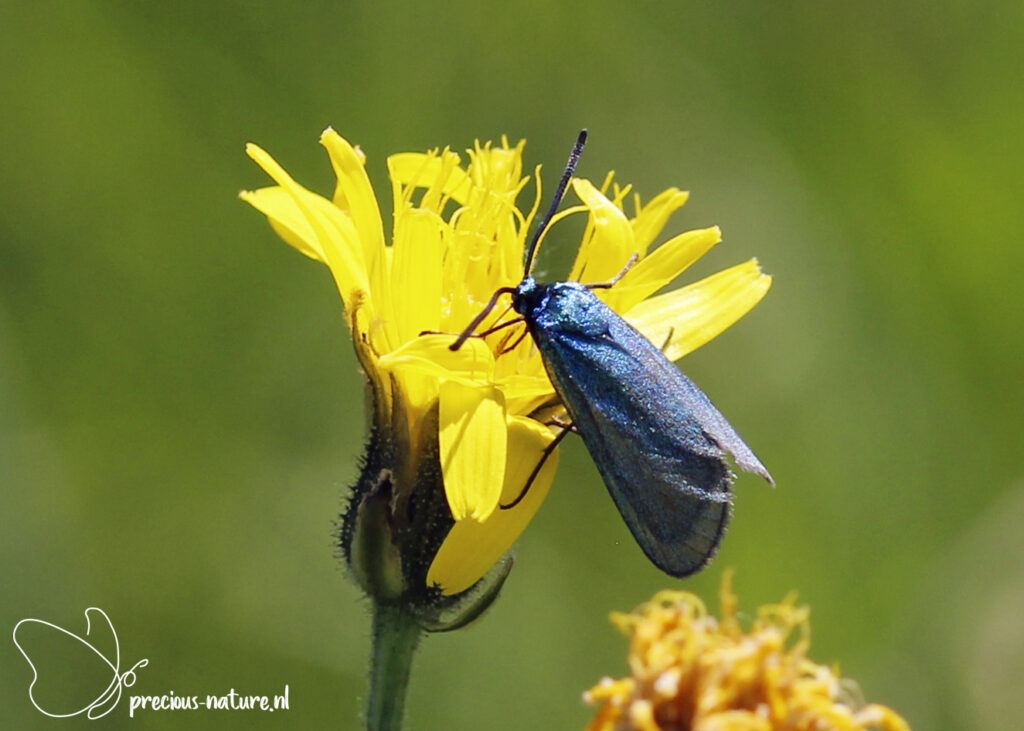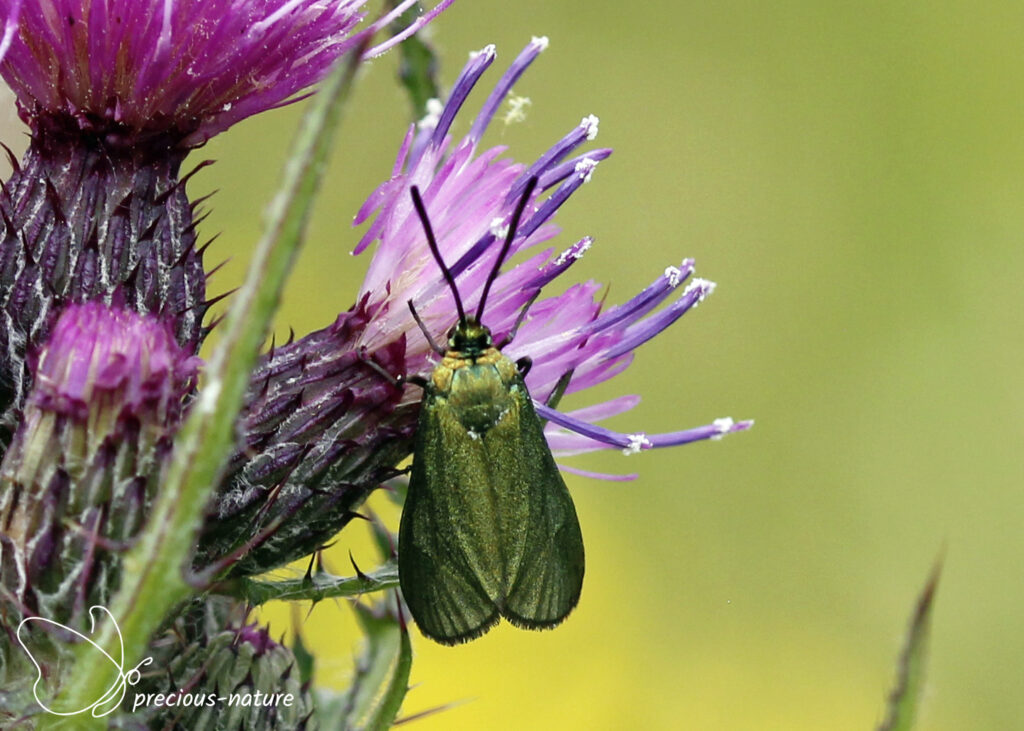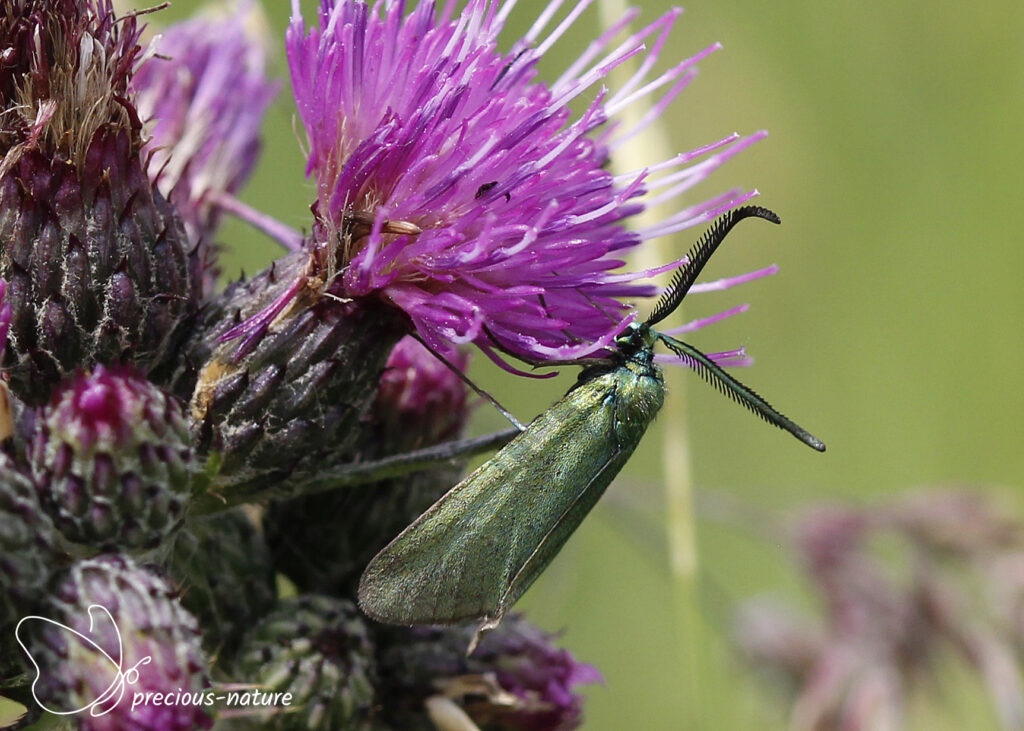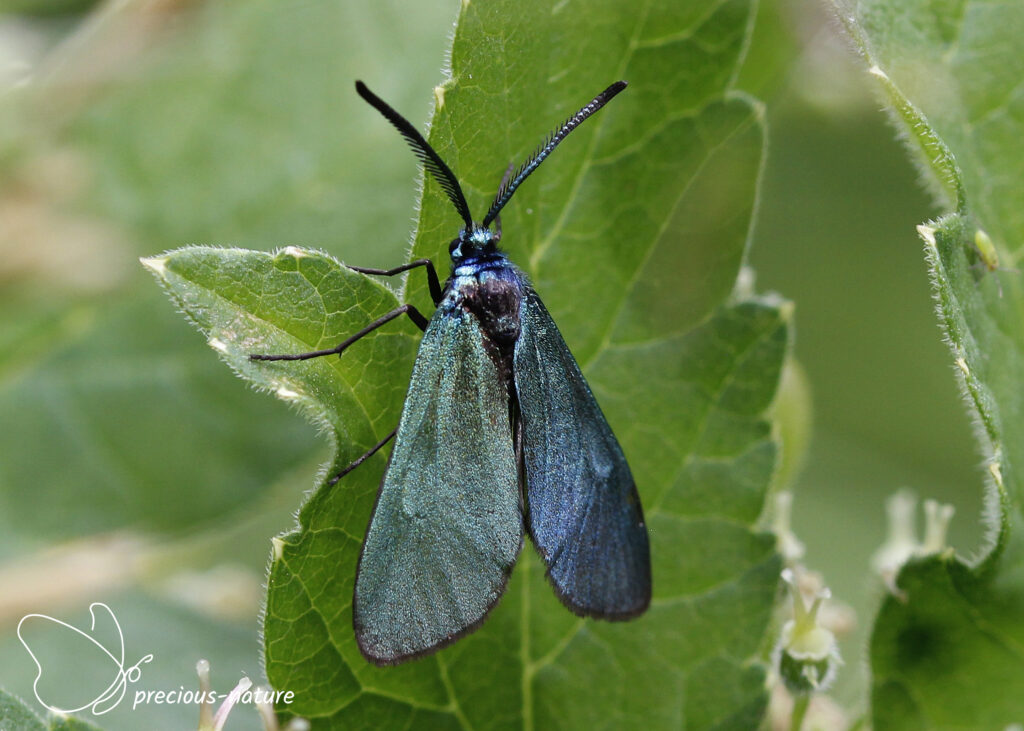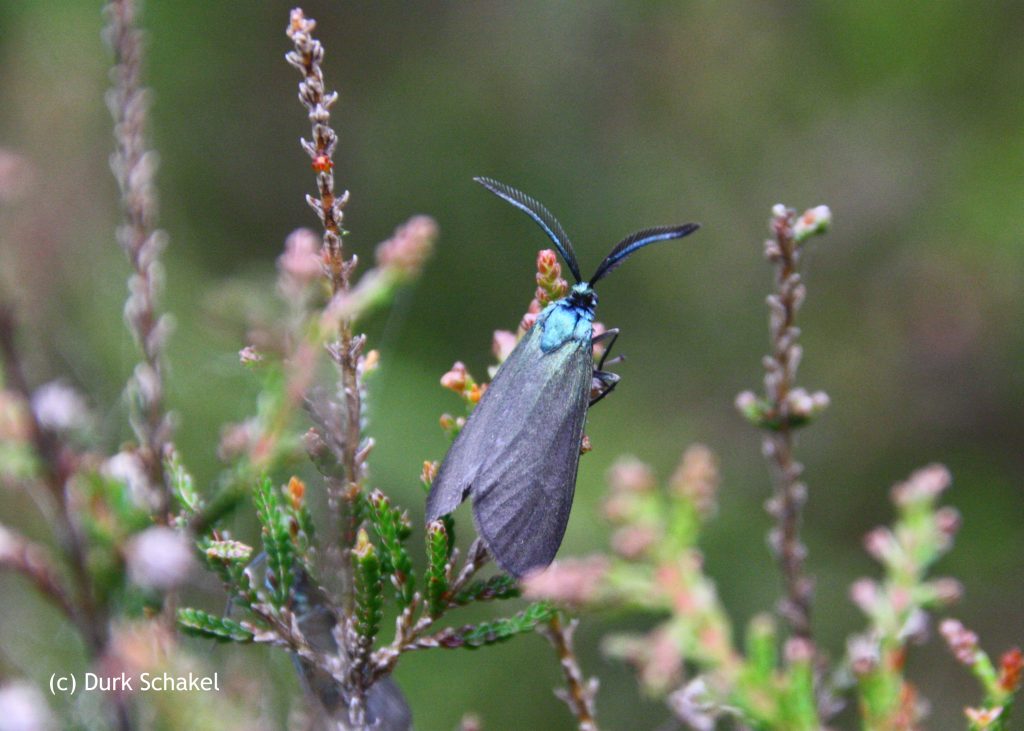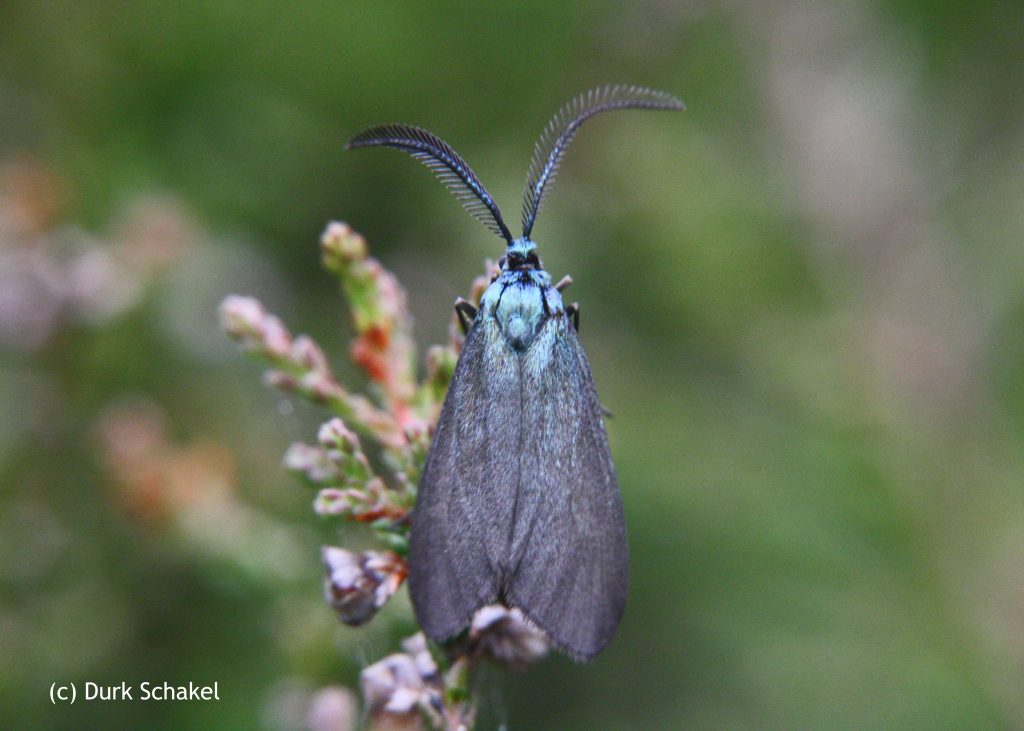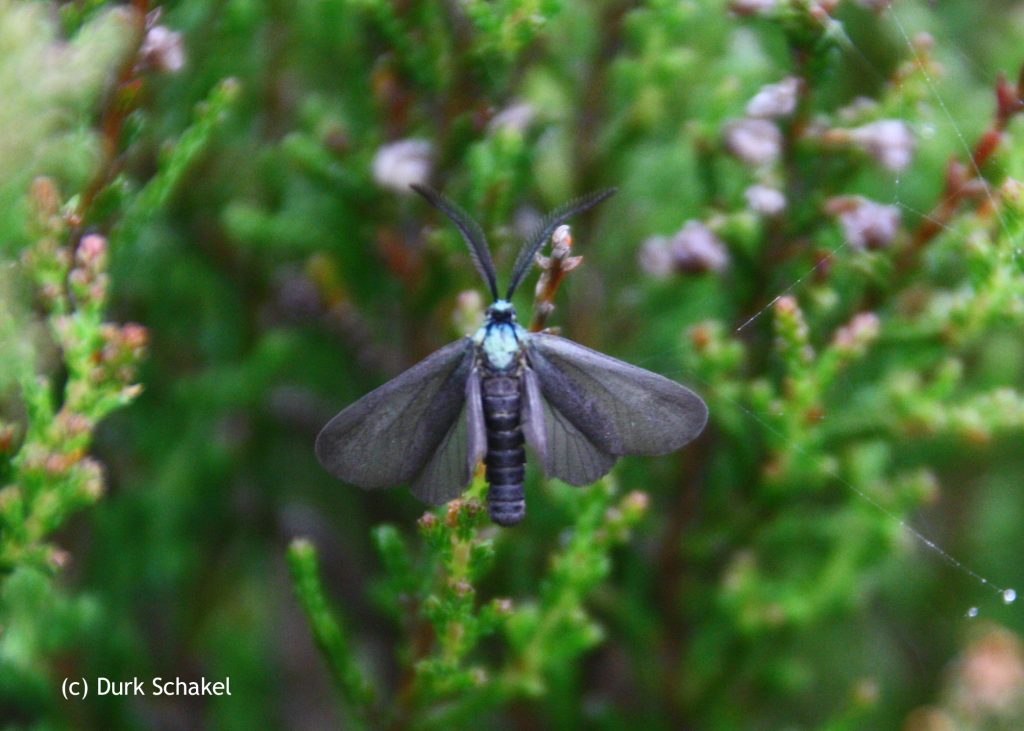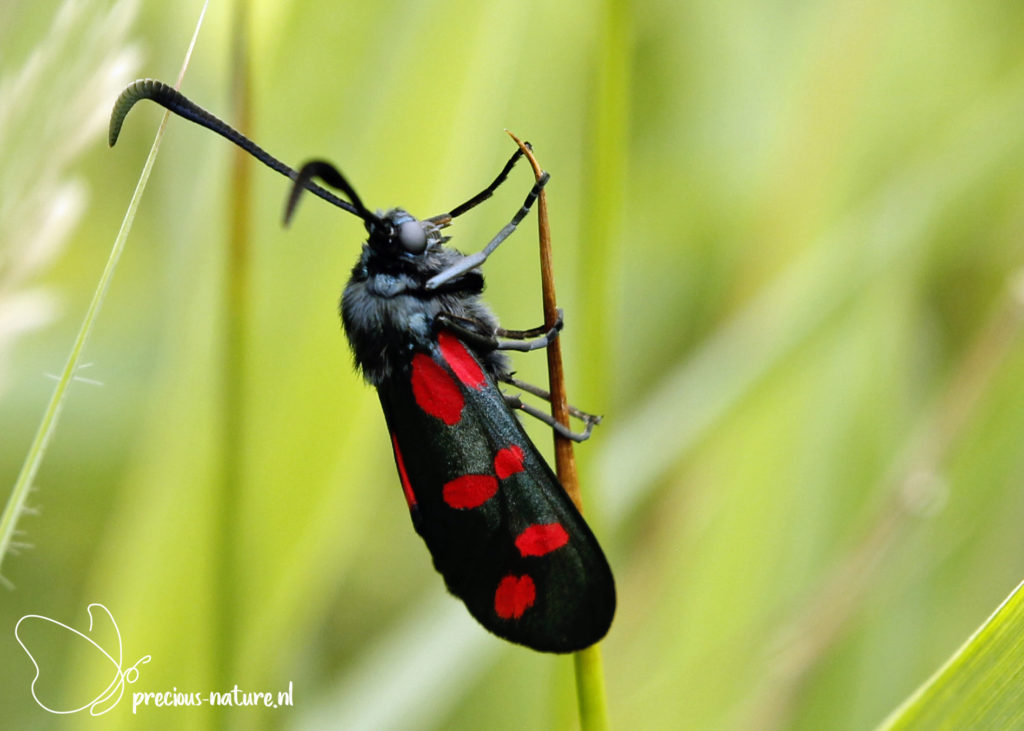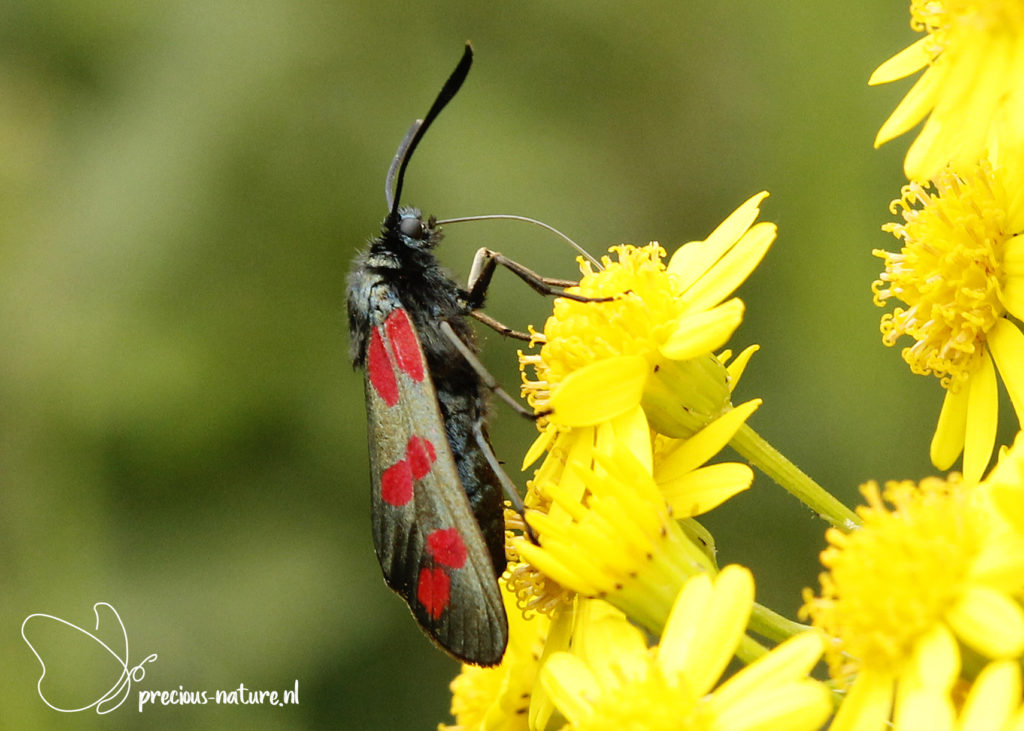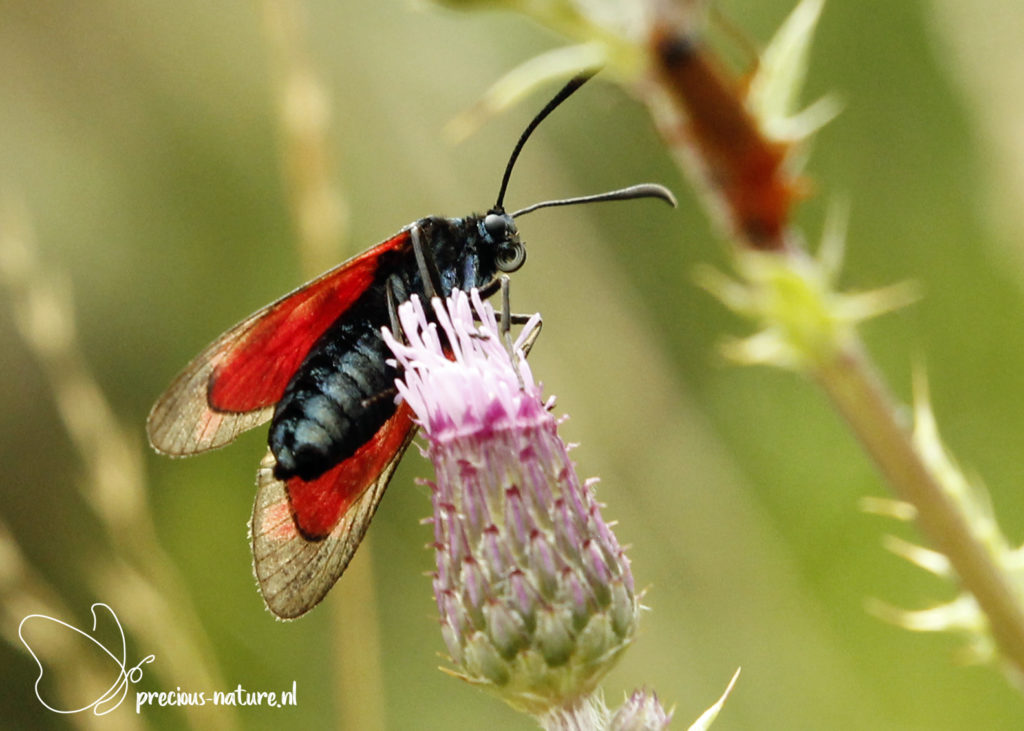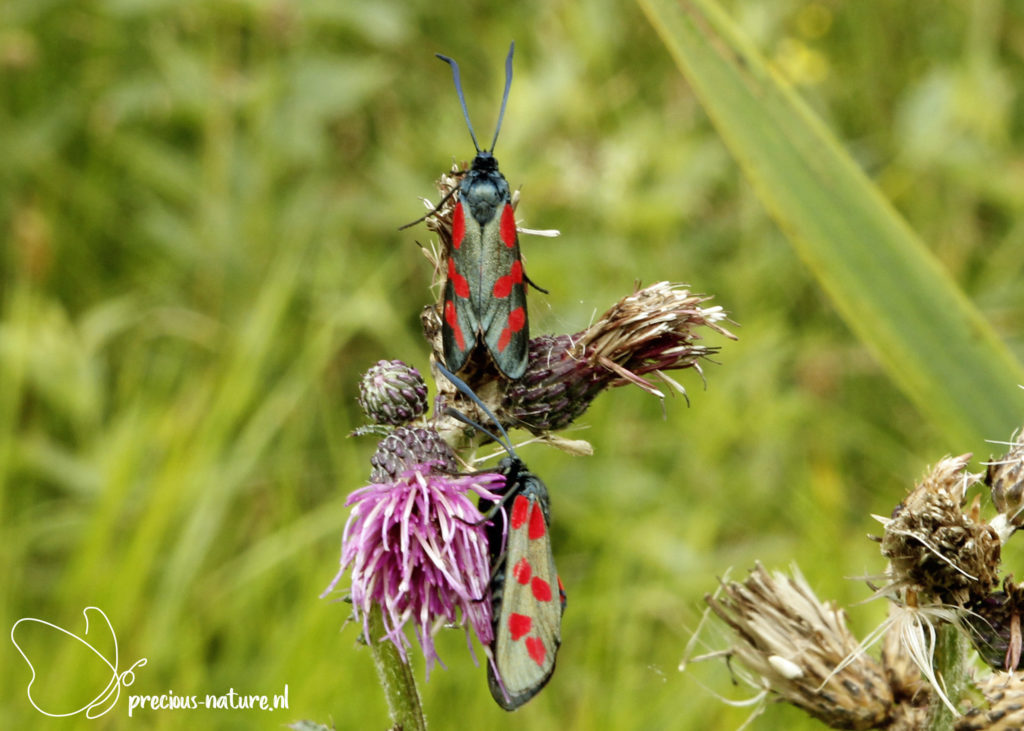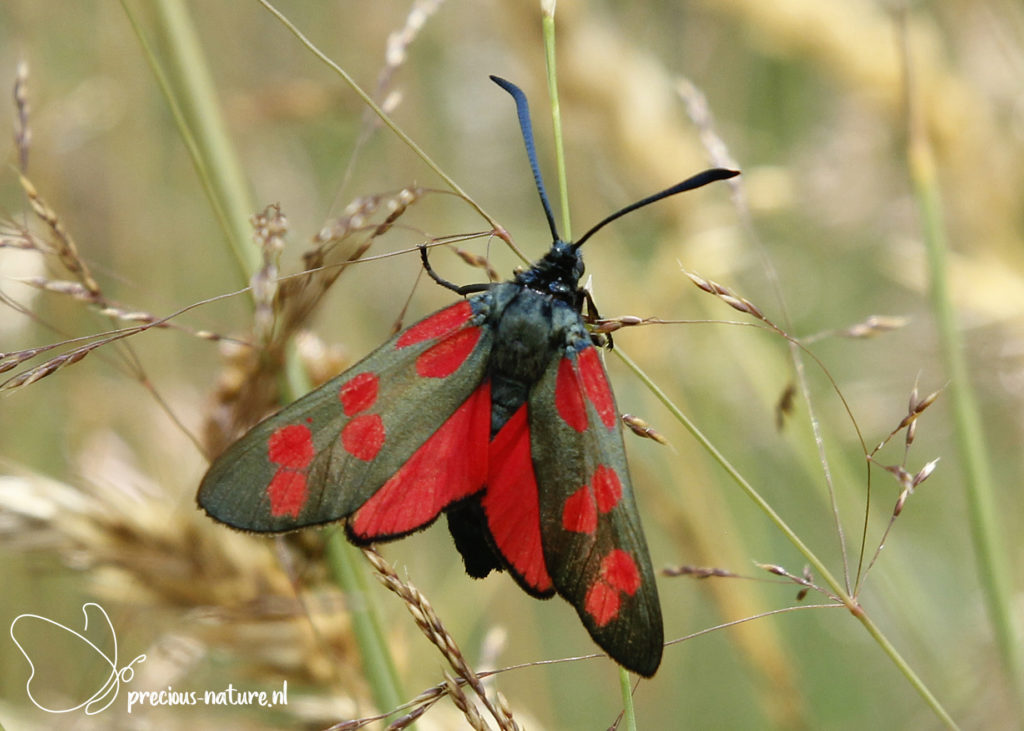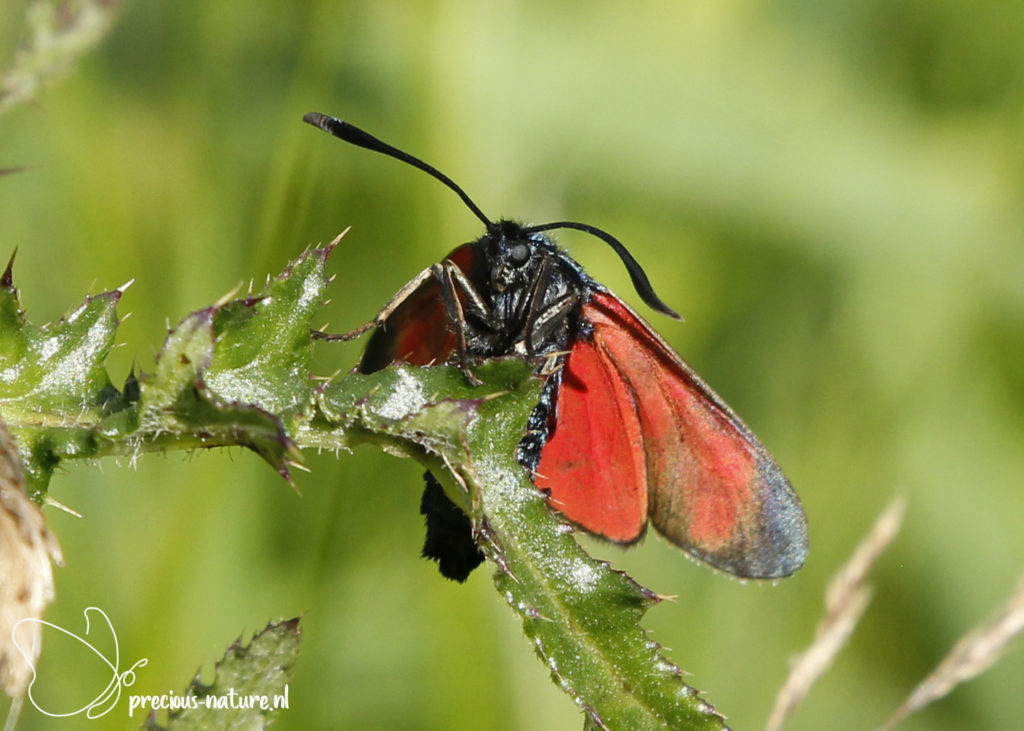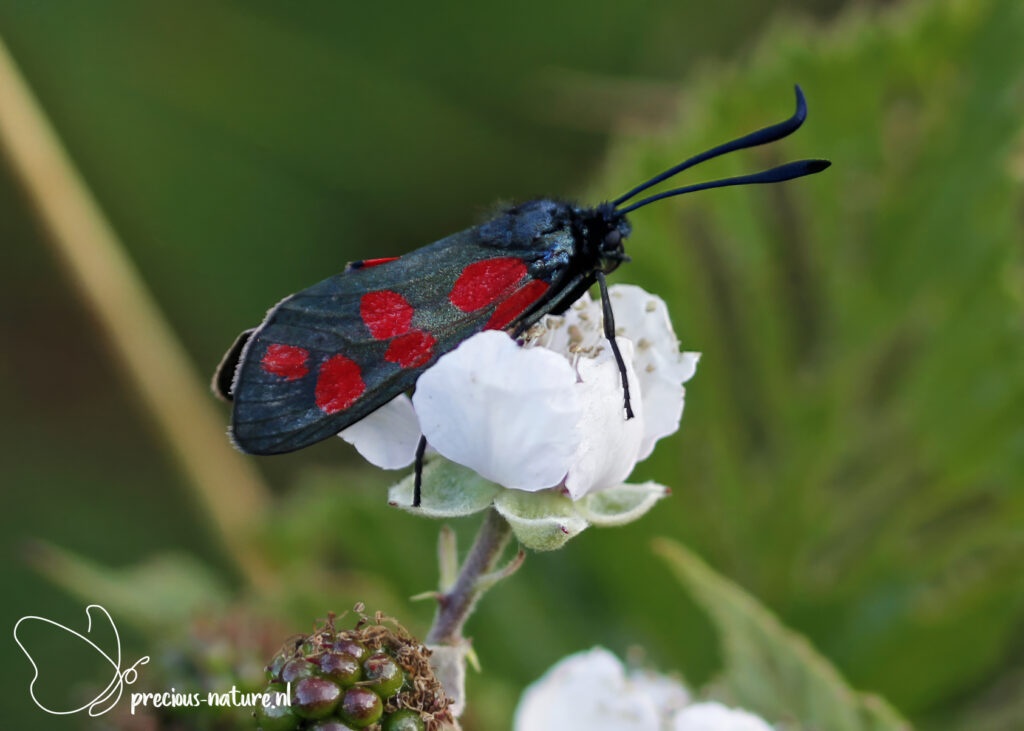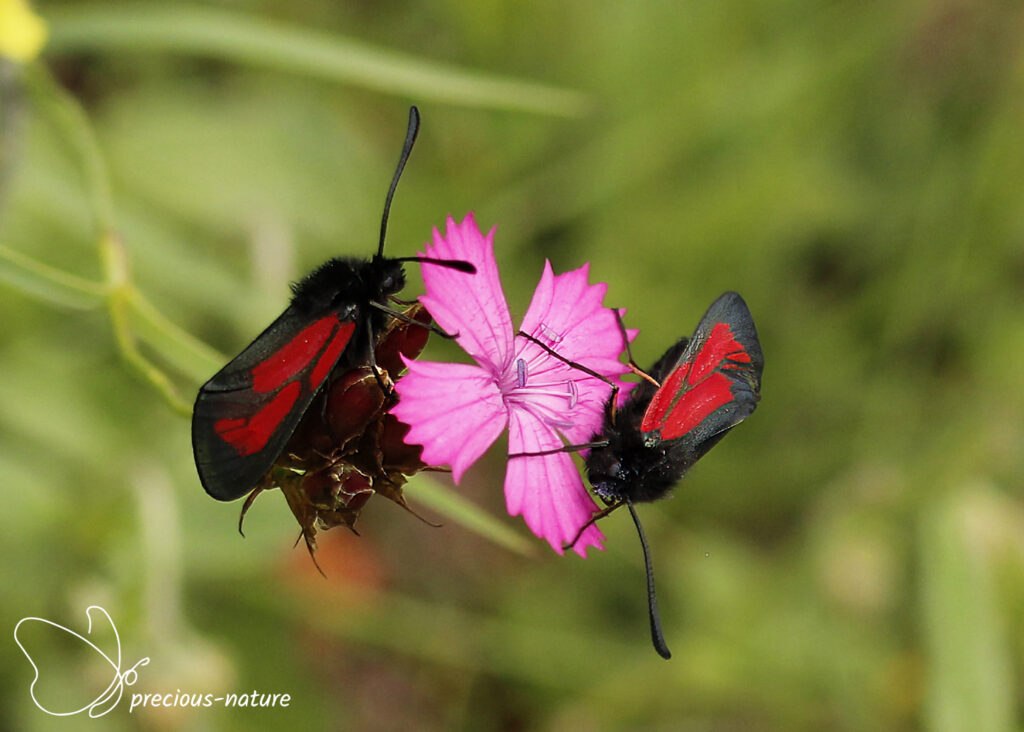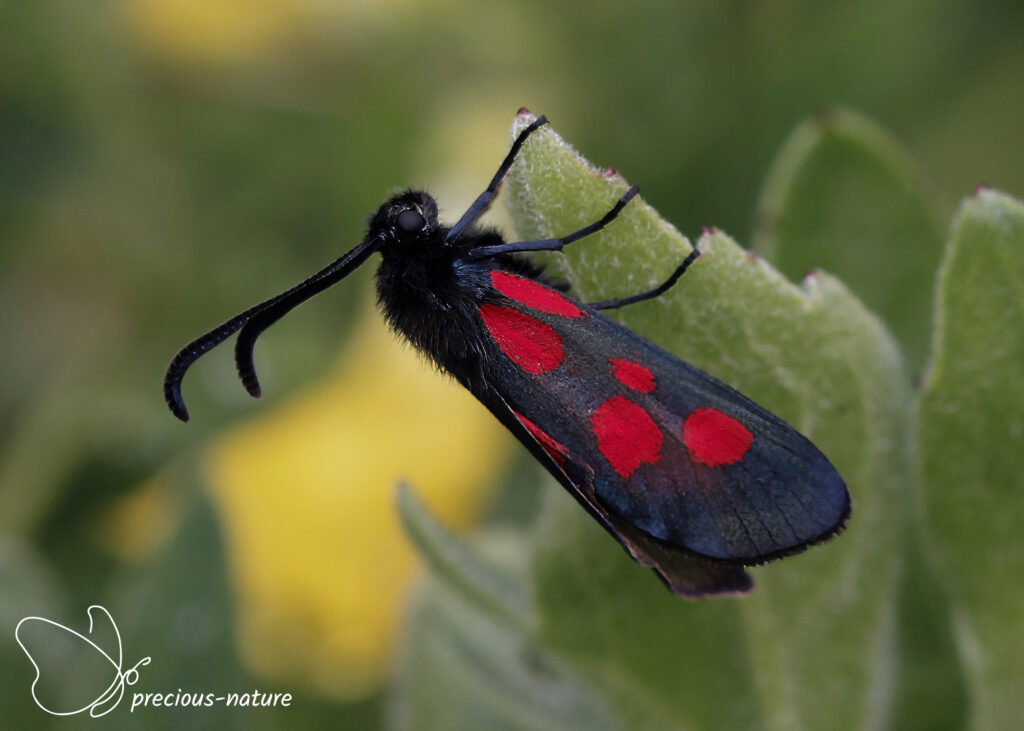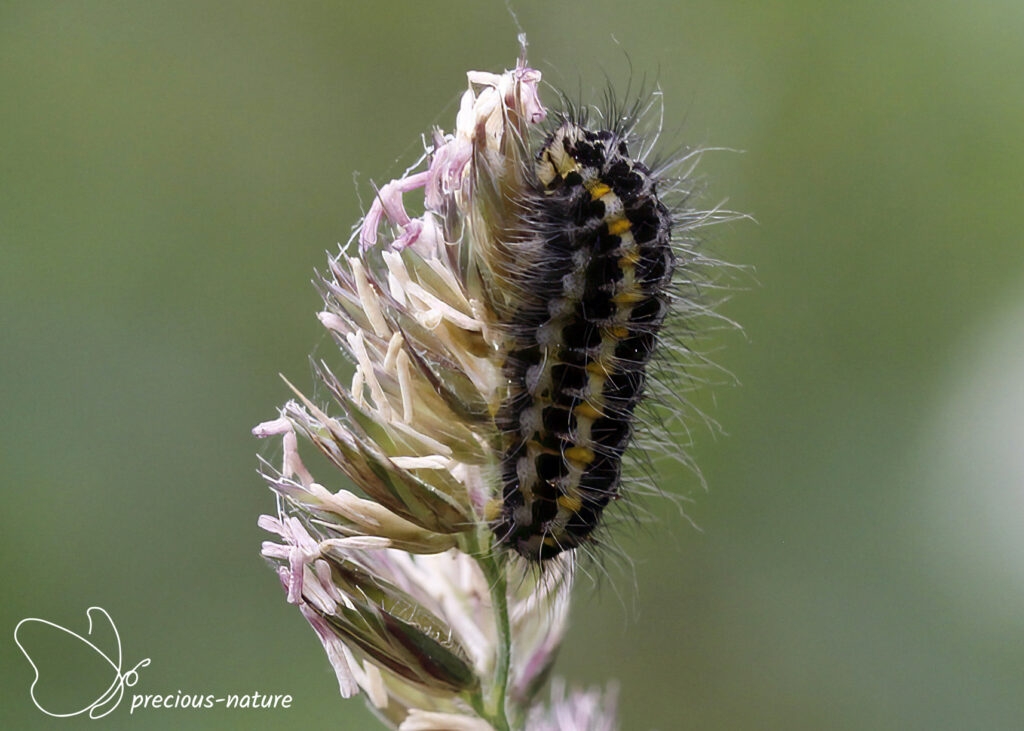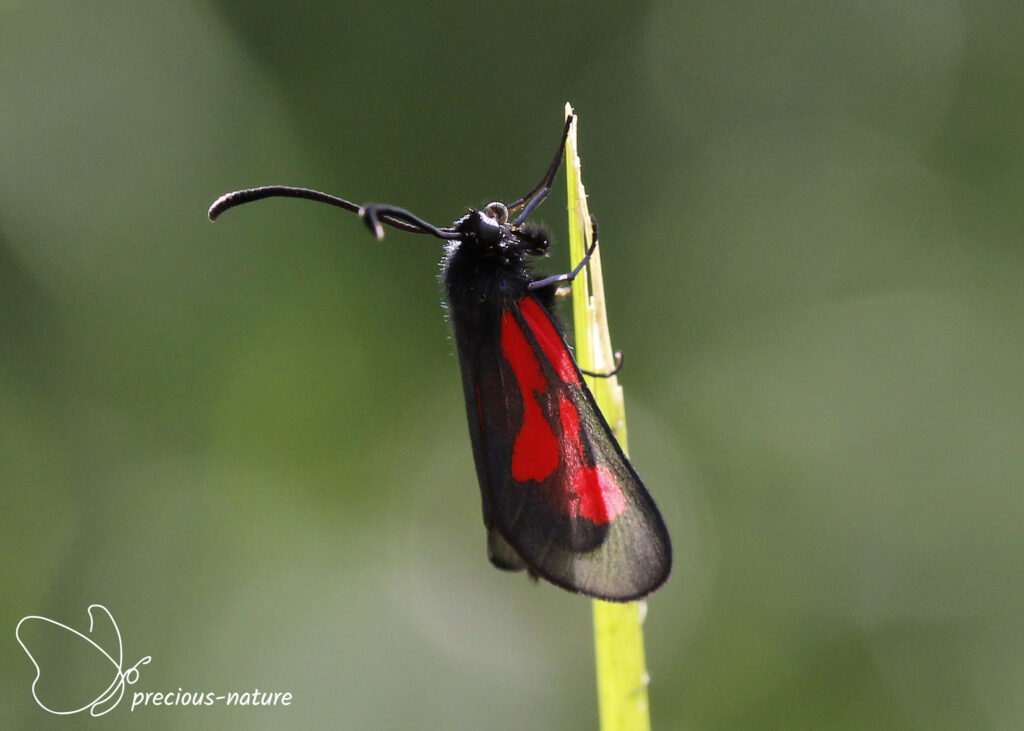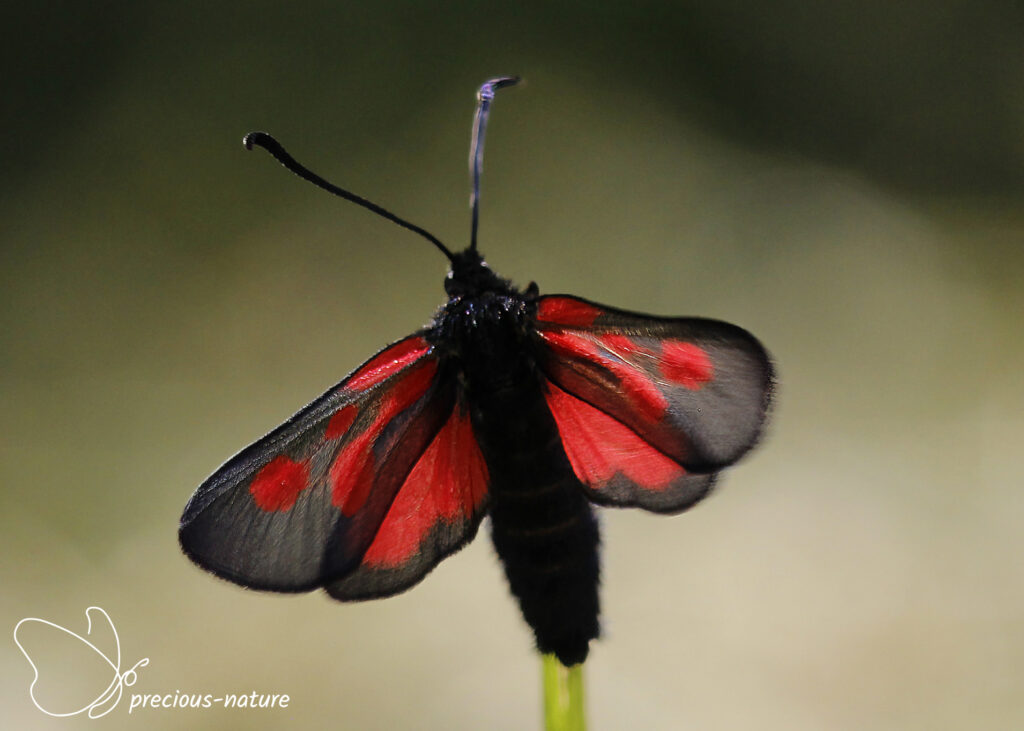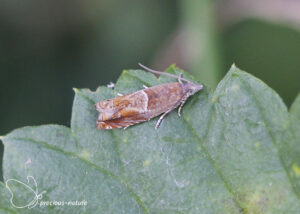Burnets (Zygaenidae) are diurnal moths of which only a few species occur in Europe. These butterflies are poisonous due to the presence of hydrocyanic acid and taste terrible to enemies like birds, bats, and spiders. The antennae are often toothed or club-shaped. The adult butterflies vary in size, have a well-developed tongue, and frequently visit flowers for nectar. The wings vary widely in shape and are often metallic in colour. The Zygaenidae have two subfamilies for which I spotted specimens: the Zygaeninae (drops of blood) and the Procridinae (metal butterflies).
Subfamily: Procridinae
Genus: Adscita
The Forester – 2019 (NL)
(NCBI-index: 753147)
The Netherlands’ most common type of metal butterfly is the Forester (Adscita statices). The forewing is metallic green, sometimes bluish, and the hindwing is light brown-grey. The abdomen is red or green with a metallic sheen. Here, the Forester differs from the Blackthorn Aurora Moth (Rhagades prune), which has a black abdomen. The male has slightly more prominent, broader and more sprung antennae than the female. The flying period spans one generation, from mid-May to early August, and the wingspan is 25-28 mm. Host plant: Sorrel. Dutch name: Metaalvlinder. Frisian name: Metal flinter.
Flying period:

Subfamily: Procridinae
Genus: Adscita
Alpine Forester – 2024 (CH)
(NCBI-index: 2.505770)
A species very similar to the Forester (Adscita statices) found in the Netherlands is the Alpine Forester (Adscita alpina). Considering the location, altitude and rocky area, I am confident about the name. The forewing is metallic green, sometimes bluish, and the hindwing is light brown-grey. The wings are, on average, longer and narrower than the Forester’s. The body is shorter and stockier. Like those of the Forester, the antennae are moderately thick and long. The flight period spans one generation, from June to early September, and the wingspan ranges from 20 to 30 mm. Host plant: Spanish Sorrel. Dutch name: Alpenmetaalvlinder. Frisian name: Alpenmetaalflinter.
Flying period:

Subfamily: Procridinae
Genus: Rhagades
Blackthorn Aurora – 2017 (NL)
(NCBI-index: 287213)
The Blackthorn Aurora (Rhagades pruni) is a very active small butterfly during the day. The forewing is brown-black, and the female has a weak green metallic glow. The hindwing is dark grey. The flight time is from June to August in one generation, and the wingspan is 16-24 mm. Host plant: Common Heather. Dutch name: Bruine metaalvlinder. Frisian name: Brúne metal flinter.
Flying period:

Subfamily: Zygaeninae
Genus: Zygaena
Six-spot Burnet – 2016 (NL)
(NCBI-index: 287375)
The Six-spot Burnet (Zygaena filipendulae) is a butterfly with six red spots on the forewing. A vein separates the red spot at the base, and care must be taken to identify it. Rarely is the red colour replaced by yellow. The ground colour of this butterfly is blue-grey. The flight time spans one generation, from May to September, and the wingspan is 30-38 mm. He flies with a usually slow buzzing flight during sunshine and is mainly attracted to various flowers, including thistles. Host plant: Common Clover, Bird’s-foot and Trefoil. Dutch name: Sint-jansvlinder. Frisian name: Sint-jansflinter.
Flying period:

Subfamily: Zygaeninae
Genus: Zygaena
Transparent Burnet – 2024 (CH)
(NCBI-index: 287345)
The Transparent Burnet (Zygaena purpuralis) is easily recognisable because of its slightly transparent black wings with three blunt red stripes. The outer stripe is shaped like an axe. Both males and females are active in sunny weather and visit plants with nectar. In cloudy or rainy weather, they can sometimes sit quietly and unprotected on the vegetation for days. The flight period is one generation from June to the end of July, and the wingspan is 30-34 mm. Host plant: Wild Thyme. Dutch name: Streepsint-jansvlinder. Frisian name: –
Flying period:

Subfamily: Zygaeninae
Genus: Zygaena
Narrow-bordered Five-spot Burent -2024 (CH)
(NCBI-index: 287380)
The Narrow-bordered Five-spot Burnet (Zygaena lonicerae) is difficult to distinguish from the Five-spot Burnet (Zygaena trifolii). To be certain, genitalia examination is often necessary. Both species have five red spots on the black forewing and a red hindwing. The middle two red spots are rarely fused in the Narrow-bordered Five-spot Burnet, while in the Five-spot Burnet, they often lie against each other. On the red hindwing, the black edge is usually thin, while it is frequently a broad edge in its congener. The forewing is often longer and narrower. The flight period and habitat can also serve as key identifiers. The flight period is one generation from mid-June to early August, and the wingspan is 30-46 mm. Host plant: Meadow Vetch, Red Clover, Common Bird’s-foot Trefoil. Dutch name: Valse vijfvlek-sint-jansvlinder. Frisian name: –
Flying period:

Subfamily: Zygaeninae
Genus: Zygaena
Reticent Burnet – 2024 (CH)
(NCBI-index: 287397)
There is no official Dutch name for this species. The Reticent Burnet (Zygaena romeo) is characteristic of forest edges with dense grasslands, at higher altitudes, around 1200 meters above sea level, as well as in more or less open spaces with individual trees. On the upper side of the dark blue transparent forewing, four red spots can be seen. The most extensive spot runs from the wing root via a narrowing into a pear-shaped spot. Between the three largest spots, there is a small, elongated spot. The hindwing is mainly red with a black edge, just like all other members of the species. The flight period is one generation from June to July, and the wingspan is approximately 35 mm. Host plant: Bird Vetch. Dutch name: Wikkesint-jansvlinder. Frisian name: –
Flying period:


